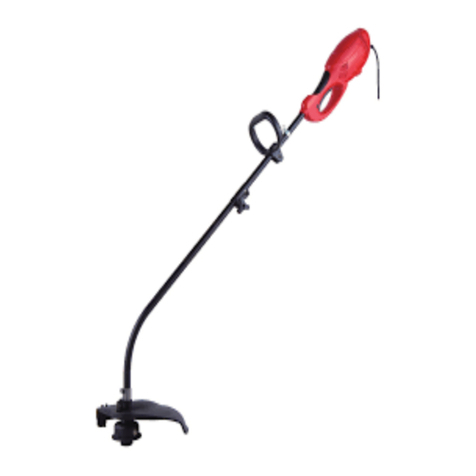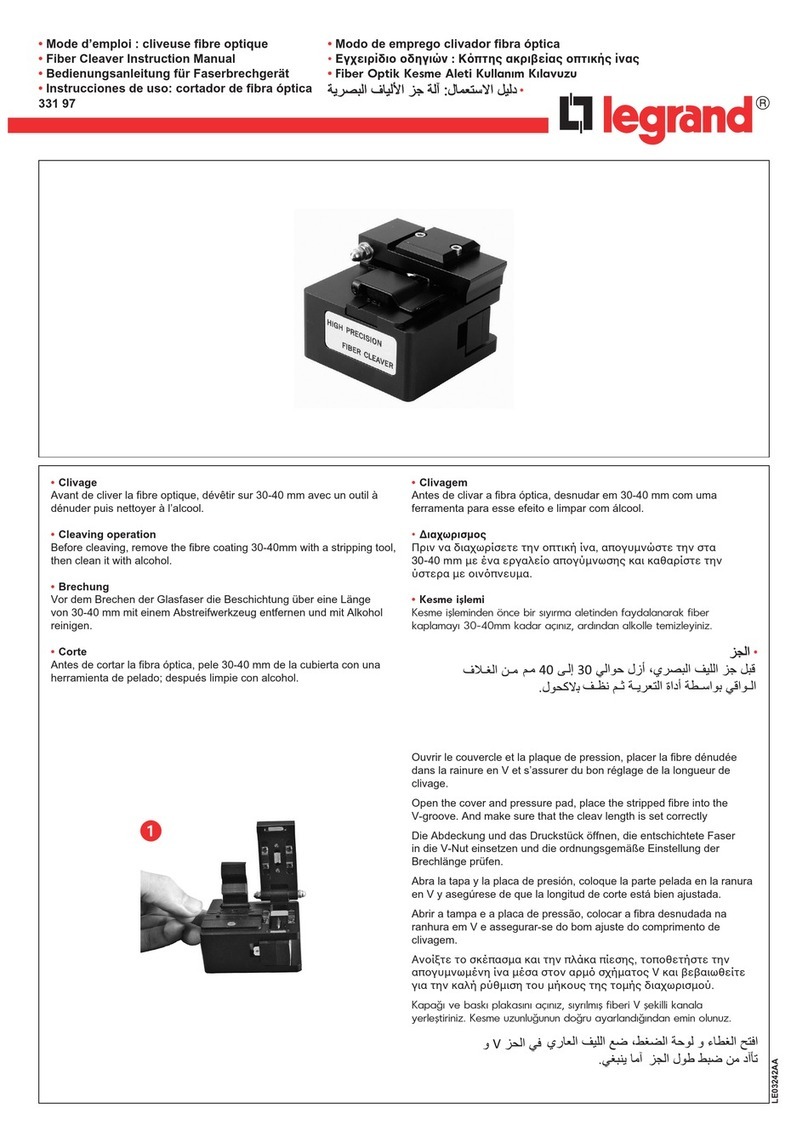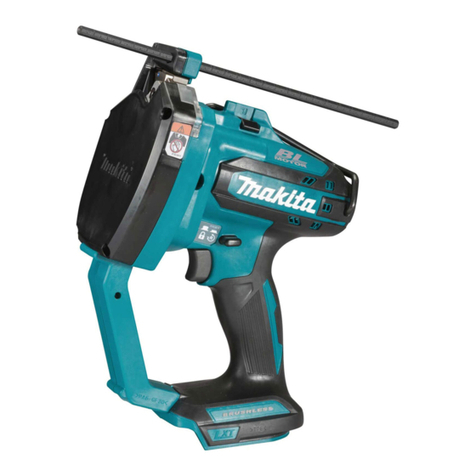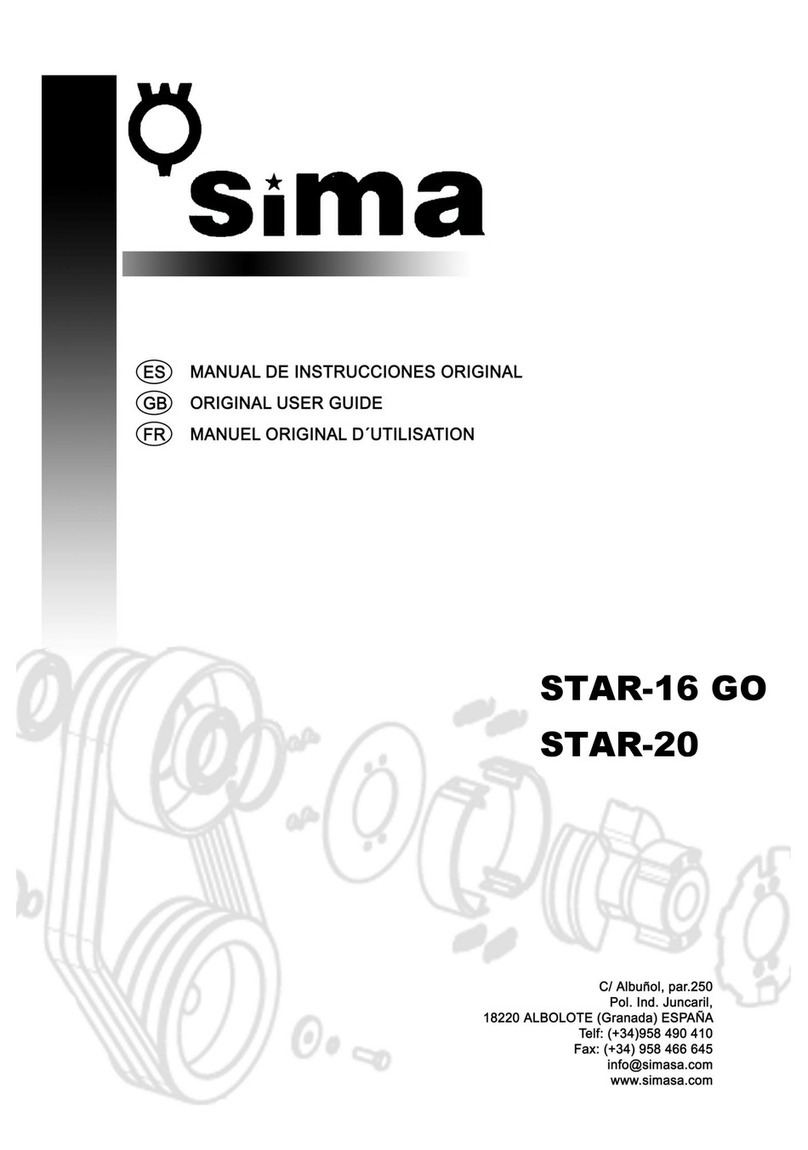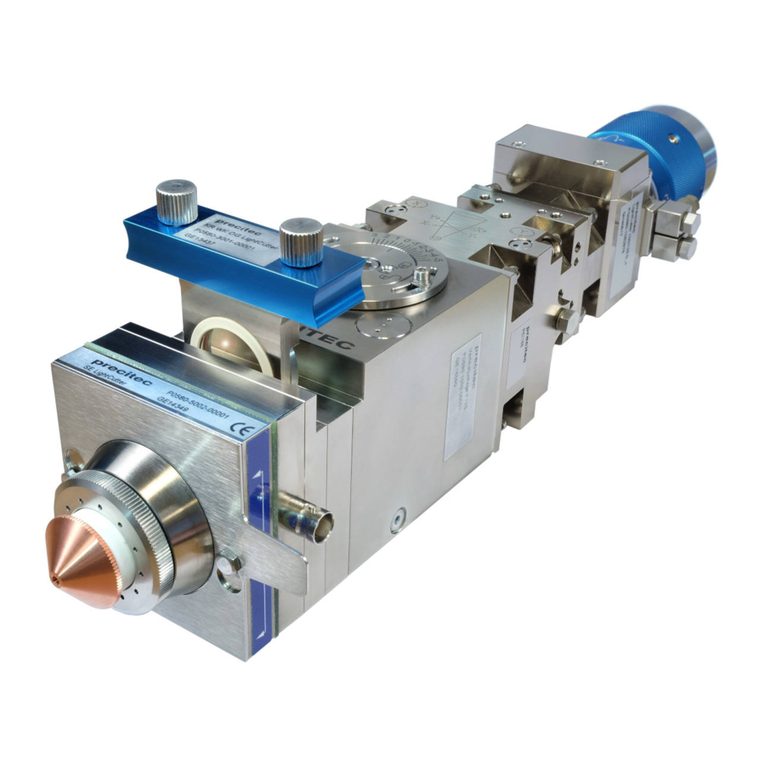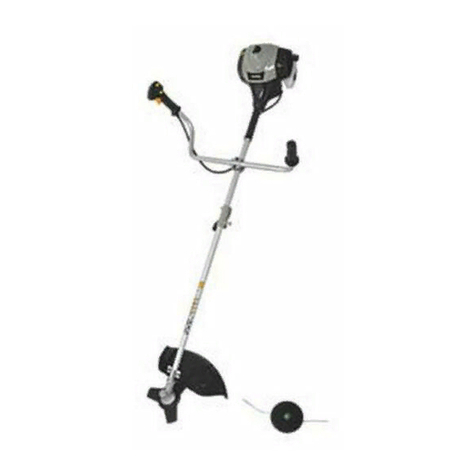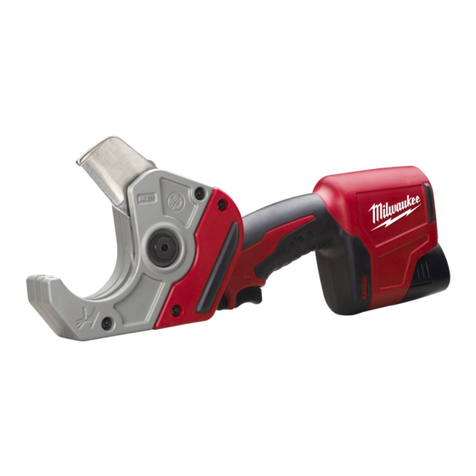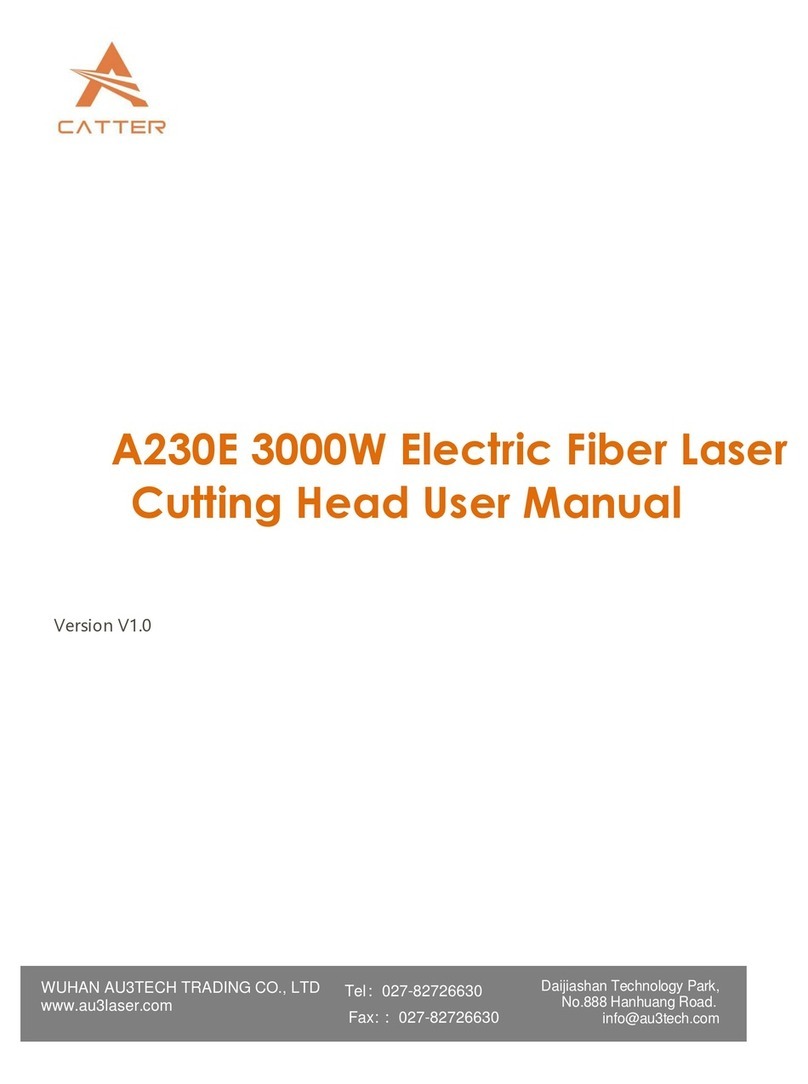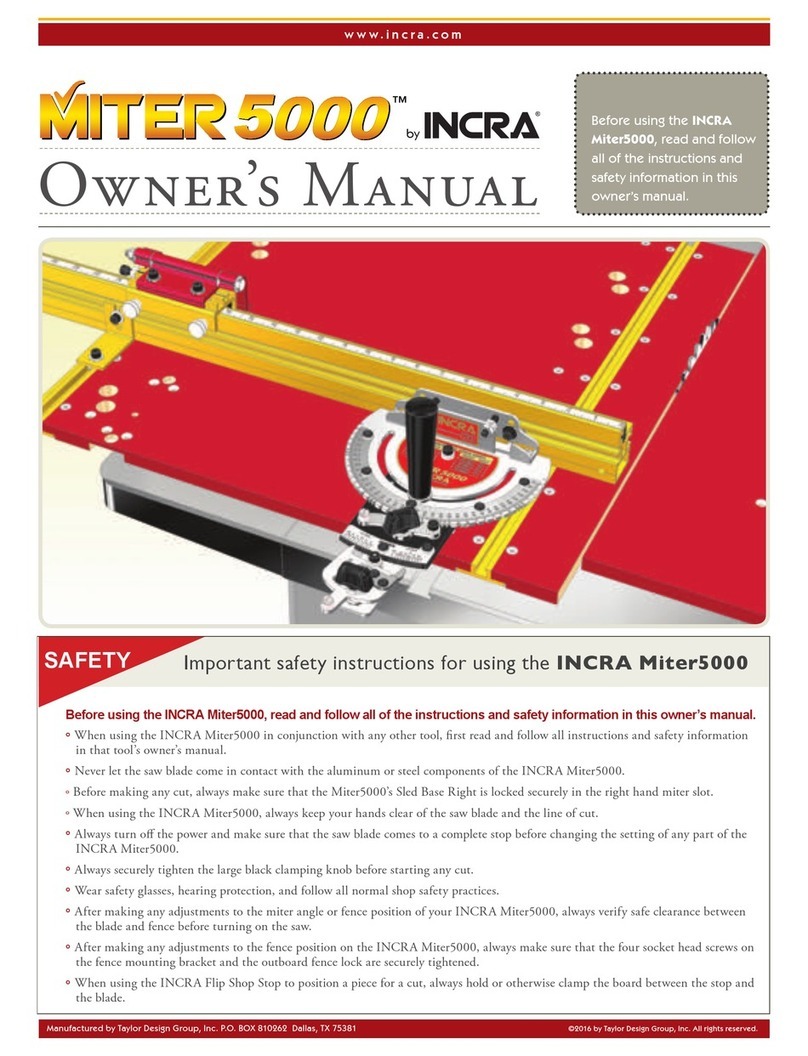IMS ROBOTICS TURBO User manual

1

2

3
Machine specifications
Designation: IMS cutter TURBO
Manufacturer: IMS Robotics GmbH
Am Bauhof 6
01458 Ottendorf-Okrilla
Phone: +49 (0)35205 75550
Fax: +49 (0)35205 53749
Website : www.ims-robotics.de
User information: As of 04/05/2022
Translation of the original instruction
Article number: 011 24 000

4
Introduction
This user information is meant to facilitate safe and proper operation and
maintenance of IMS devices and should therefore be given the attention it deserves.
Note
When operating the unit, be sure to comply with accident prevention rules and
general safety regulations.
Important information, as on security engineering, is accompanied
by symbols and should be observed in order to prevent accidents
and equipment damage.
Liability, warranty
All data and information for miller operation and maintenance embodies the
manufacturer's past experience and findings to the best of his knowledge. The right
to make technical modifications resulting from the improvement of the unit described
in these instructions is reserved. During the warranty period, the system may be
repaired or modified only by the manufacturer or on his instructions, otherwise no
liability or warranty will be accepted for the unit as a whole.

5
Table of contents
Table of contents...................................................................................................... 5
1Intended Use...................................................................................................... 7
2Technical data ................................................................................................... 8
2.1 Specifications ................................................................................................ 8
2.2 Main dimensions............................................................................................ 9
3General safety rules ........................................................................................ 10
4Description, setting ......................................................................................... 11
4.1 Modules....................................................................................................... 11
4.2 General description ..................................................................................... 12
4.3 Universal cable drum................................................................................... 12
4.3.1 Manual cable drum ............................................................................... 12
4.3.2 Motorized winding (optional) ................................................................. 12
4.4 Robot........................................................................................................... 14
4.4.1 Carriage ................................................................................................ 14
4.4.1.1 Pressure rail ................................................................................... 14
4.4.1.2 Reversing safeguard ...................................................................... 15
4.4.2 Milling arm............................................................................................. 16
4.4.3 Swivel head color camera..................................................................... 17
4.4.4 Additional lighting.................................................................................. 19
4.5 Optional features ......................................................................................... 21
4.5.1 Circular profile mounts, nominal dia. 450-800....................................... 21
4.5.2 Analog data input with meter counting (optional) .................................. 21
4.5.3 Meter counting calibration (optional) ..................................................... 23
4.5.4 Swivel drive for milling motor with flushing water (optional) .................. 23
4.5.5 Water supply (optional) ......................................................................... 24
4.5.6 Vehicle installation kit (optional)............................................................ 25
4.5.6.1 Basic kit .......................................................................................... 25
4.5.6.2 Winch with movable arm and electrical winch ................................ 28
4.5.6.3 Drawer module ............................................................................... 29
4.5.6.4 Controlling desk.............................................................................. 30
4.5.7 Connection to the Quick-Lock System .................................................. 31
5Operating instructions .................................................................................... 32
5.1 Media supply ............................................................................................... 32
5.2 Startup......................................................................................................... 33
5.3 Operation..................................................................................................... 34
5.3.1 Operation cutting robot ......................................................................... 34

6
5.3.2 Operation with Quick-Lock Offset Packer ............................................. 35
5.4 Conversion to other nominal dias. ............................................................... 36
5.4.1 Format parts and assignment to nominal dias. ..................................... 37
5.4.2 Nominal width-dependent setup............................................................ 38
5.4.3 Convert pressure rail............................................................................. 39
5.4.4 Installing the mount............................................................................... 41
5.4.5 Extension for egg shaped profile ESP (optional)................................... 43
5.4.6 Nominal diameter extension DN800 (optional)...................................... 48
5.5 Cutting tools ................................................................................................ 50
5.6 Pressure control .......................................................................................... 51
5.6.1 Function check...................................................................................... 51
5.6.2 Control operation .................................................................................. 51
5.6.3 Inspection after completion of work....................................................... 52
6Repairs and maintenance ............................................................................... 53
6.1 Cleaning ...................................................................................................... 53
6.2 Transport ..................................................................................................... 53
6.3 Inspection .................................................................................................... 53
6.4 Service, care ............................................................................................... 53
6.4.1 Nitrogen charging.................................................................................. 54
6.4.2 Oiling the air motor................................................................................ 56
6.4.3 Change V-belts ..................................................................................... 59
6.4.4 Change air motor .................................................................................. 62
7Additional regulations to be observed .......................................................... 65
8Accessory overview........................................................................................ 66
9EC-Declaration of Conformity ........................................................................ 67

7
1 Intended Use
Operational safety of the equipment supplied is ensured only when used as intended.
The intended use includes following the regulations contained in these operating
instructions as well as compliance with all maintenance and service tasks.
The IMS cutter TURBO must only be used for cutting work for the restoration of
pressureless pipes or lines. The device can be used to open inliners after restoration
and remove obstacles (roots, protruding seals, minor offsets, or the like). The
machine may not be used for unintended purposes.
Unauthorised structural changes to the equipment may cause damage to the
machine thus representing a hazard to persons. IMS is not liable for resulting
damages. In the event of damage the operating company remains responsible and
responsibility cannot be transferred to IMS.

8
2 Technical data
2.1 Specifications
System components: Universal carriage
TURBO cutting arm
Camera
Add-on mount
Universal control unit
Universal cable drum
Milling performance: Milling cutter max. dia. 120 mm for concrete
Travel speed: max. 10 m/min. with wheel, dia. 140 mm
Format: Pipes, nominal dia. 200 mm (without sleeve offset) with
add-on mount/parts for nominal pipe dias. up to 800 mm
Change of nominal dias.:between approx. 10 and 20 min. depending on nominal
pipe dia.
Power: 230 V +/-1% /50 Hz / 6A and 110 V / 60 Hz
Weight: TURBO : ca. 70 kg
Universal cable drum: ca. 115 kg
Universal control unit: ca. 10 kg
Compressed air: Consumption: ca. 3 m3/ min
Supply pressure: 10 bar
Quality: filtered, dry,
max. temperature 40C
Caution! contaminated/moist air will damage the air motor
and seals on the robot!
Workplace: operating console
Temperature range: + 5 ... + 40C
(Caution: do not operate control system in widely varying
temperatures (condensate) or in the open when it rains!)
Supply line: 100 m on cable drum
Camera signal: PAL

9
2.2 Main dimensions
Universal carriage with milling arm:
Device mounted for pipes 300 mm
approx. 400 mm approx. 650 mm
approx. 1050 mm

10
3 General safety rules
Caution!
System may only be operated by persons who have been
instructed in its use. A lack of information may cause damage to
the unit or create hazards for the operator.
Caution!
Pull out mains plug before opening a unit.
Caution!
When lowering individual components or the robot as a whole
make sure no-one is standing in the shaft or under the load.
Observe accident prevention rules for work in pipelines and for earthmoving
machinery, winches, hoists and drawgear, and safety regulations for pipeline building
work.

11
4 Description, setting
4.1 Modules
Overall view
1
Universal cable reel, motorized
(optional)
9
Electric swivel drive (optional)
2
Universal control unit
10
Water nozzle (optional)
3
Universal carriage
11
Additional lighting
4
Oil sight glass
12
Air connection
5
Milling arm
13
Electrical connection
6
Camera with nitrogen valve
14
reverse drive sensor
7
Carriage nitrogen valve
15
Water connection
8
Swivel arm nitrogen valve
8 6 9
3 4 7 5 10
11 12 13 14 15
2 1

12
4.2 General description
The IMS universal carriage with milling arm TURBO III in conjunction with the multi-
purpose control system and universal cable drum with 100 m media cable is
designed for milling work in the repair of sewers. The use of format parts makes it
possible to convert the basic version from nominal dia. of 200 mm (inside) to a max.
of 800 mm (depending on scope of supplies). For use in shafts the overall length of
the unit may be reduced by connecting media only inside the shaft or swinging the
milling arm out of the way and straightening it on insertion.
Units should generally be stored in a frost-free environment.
4.3 Universal cable drum
4.3.1 Manual cable drum
This accommodates 100 m of lines for electricity, pneumatic and water supplies. The
air duct in the hub of the drum is maintenance-free. The control lines are connected
via slip ring contacts. If the flushing water connection is not used, it should be
covered with a dummy cap.
4.3.2 Motorized winding (optional)
This supports the winding up/paying out of hose from the package. The air motor in
the cable drum should be oiled after each using and afterwards should be moved by
hands. This can be done through the air inlet hose.

13
Caution!
Do not reach into the drum or its drive when in Operation. Prior to
working on the drum remove the air supply.
The media hose must not be overstretched, due to high tensile
forces, (> 1000 N/ ca. 100 kg) because of the hose and the
internal lines can be damaged or can rip.
The crack resistance of the media hose and the tensile forces of
the motor cable winding enable a rescue in emergency case, if the
robot in the pipe is not jammed. In no case additional forces must
be used. (vehicle, winches, etc.)
Be sure to use the deflection sheave supplied for winding up/paying out supply line in
the manhole.

14
4.4 Robot
This has electric drives for travel and turning/swivel of the head.
Caution!
All electrical driven axes of the robot (driving movement, turning,
swivelling, 4. axis), as well as the rotation movement of the
camera must not be moved by hand.
The couplings of the power feed line are watertight when plugged together (IP 65).
The milling cutter is driven by an air motor.
4.4.1 Carriage
4.4.1.1 Pressure rail
To prevent wheel slip during forward travel, the pressure rail may be pressed against
the crown of the pipe when moving to the place of work. Please note that the milling
motor is active. If the valve on the universal cable drum is only partly open it can be
used to control the pressing force of the pressure rail.
Caution!
During robot travel with pressure rail in the duct the milling motor
has full capacity at full air pressure.
During milling, the pressure rail is pressed against the crown and thus gives the robot
extra stability during operation. Using a switch, the pressure rail can be switched on
and off. When it is off, work with caution as there is a greater risk of the robot
overturning.

15
Caution!
Under normal conditions, the milling robot may operate without a
pressure rail. The latter is an auxiliary and makes it possible for
the operator to deal with extreme situations such as working at
greater depths or on smooth pipe walls.
4.4.1.2 Reversing safeguard
This is to prevent the robot from running over media supply lines during reversing.
The strain relief device of the supply line is hung up here.
Caution!
While the robot is reversing, make sure the electrical/pneumatic
supply line is pulled back by the operating personnel at the same
time. Do not pull the robot out by motorized winding!
The robot may cover short distances even if the reversing sensor is not active.
Caution: Even though there is a risk of running over the hose, this condition may be
used to recover the robot from the duct if the reversing sensor is defective.

16
4.4.2 Milling arm
Mount this on the carriage with two screws, while at the same time making the
electrical connection with plug contacts and providing an air supply by hose. In
addition, connect the flushing water hose to the optional electric swivel drive on the
milling motor. In the absence of an electric swivel drive, five different fixing holes are
provided for the milling motor. An air hose is mounted on the milling arm side and
should be positioned as shown.
A stop on the carriage swiveling axle makes rotation of the milling head through
approx. 400° possible. A level on the air motor indicates the position of the swivel
arm in the pipe. The milling arm has additional lighting for better visibility inside pipes.
During the penetration in the pipe the cutting arm should be hold in a position, that no
dirt can penetrate in the air holes of the cutting motor.
Air hose

17
4.4.3 Swivel head color camera
This enables the operator to watch the milling operation in the entry direction. Use of
a camera limits the angle of view in the pipe, i.e. parts of the pipe are concealed by
the motor/milling cutter on entry.
From a pipe diameter of DN 250/10”, the camera can be mounted so that the angle of
view into the pipe is increasing.
The camera is equipped with a swivel motor and two halogen lamps which are
controlled by the universal control unit. For cleaning the screen of the camera and the
lamps swivel the camera head back over the wipers until the stop and return.
Caution!
It is desperate to swivel the camera until the stop, otherwise the
wipers could be damaged!
DN
200
DN 250
from DN 300

18
Additionally, a water nozzle from the water equipment (optional) can be used for
cleaning the screens.
Clean the camera periodically, to avoid strong deposits and thereby caused damages
of the wipers. To protect the electronic components, the camera is filled with nitrogen,
which should be checked daily before and after work (see 6.4.1 Nitrogen charging).
Caution!
The quality of the video image depends largely on the uniform
illumination of the area being observed. Excessive brightness will
cause dissolution of the video image and overheating, which
shortens the service life of lamps. Full lighting over several hours
may reduce the quality of video images.
Nitrogen valve Wiper blades
Halogen lamps

19
4.4.4 Additional lighting
The additional lighting can be used in pipes with an inner diameter from 225 mm/9“.
Remove a headless screw on top of the cutter arm, the cover on top of the cutter arm
and the cover of the cutter motor bearing to assemble the additional lighting.
Disassemble the swivel color camera too (see 4.4.3 Swivel head color camera).
Mount the additional lighting on the cutter arm. Ensure correct seating of the seal
ring. Align the camera with the guide pin and fasten the camera with the 2 Allen
screws.
Additional lighting
Headless screw Cutting arm cover
Cover of cutter motor bearing
Guide pin Seal ring

20
To mount the front lighting, ensure the correct seating of the seal ring (on the front
lighting) and fasten the lighting with 4 countersunk screws (M3x8).
To establish the electrical connection, screw together the plugs of both additional
lightings. Afterwards, place the cable in the cutter arm so that the swivel color camera
can be assembled.
Assemble the swivel color camera and charge nitrogen (6.4.1 Nitrogen charging).
Operation of the lighting is described in the operating manual of the universal control
unit.
Countersunk screws M3x8
Cable of front lighting Plug of front and rear lighting
Table of contents
Popular Cutter manuals by other brands
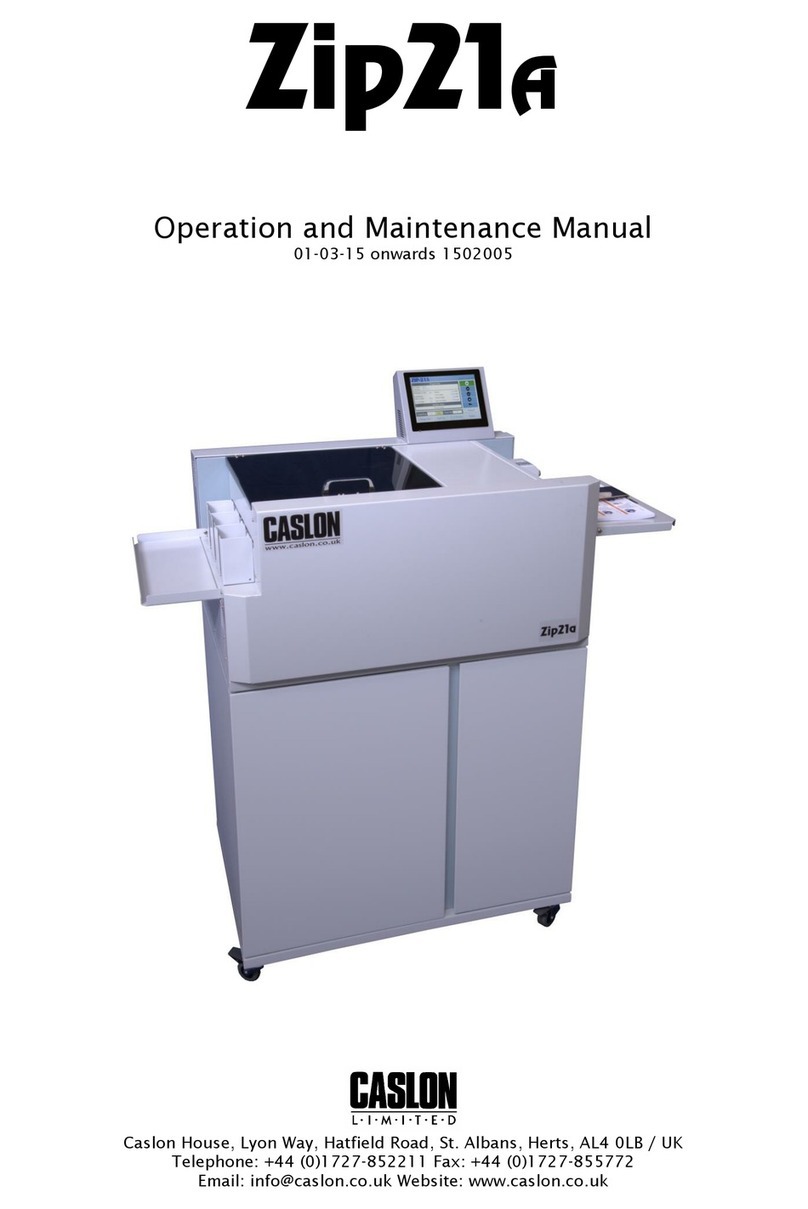
Caslon
Caslon Zip21A Operation and maintenance manual
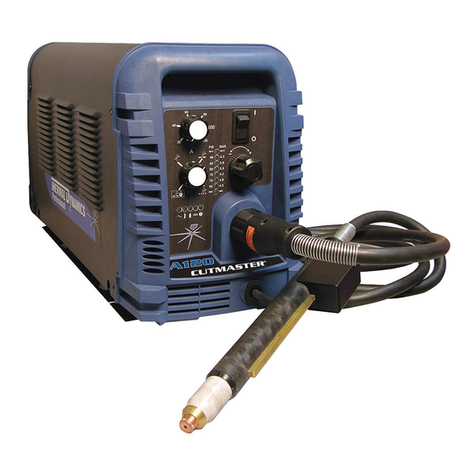
Thermal Dynamics
Thermal Dynamics A120 operating manual

Formax
Formax FD 574 installation guide
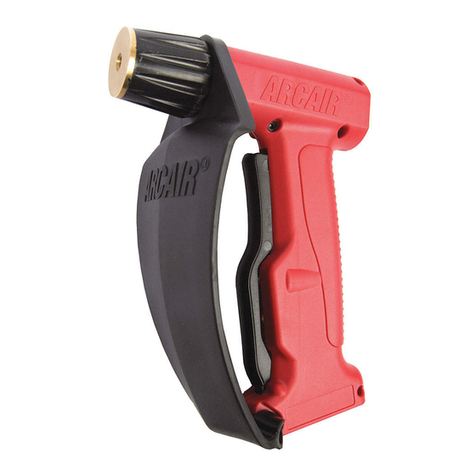
ESAB
ESAB ARCAIR SLICE Series Safety and operating instructions

Pittsburgh
Pittsburgh 41146 Adjustment instructions

Mafell
Mafell ZAF 200 Operating instructions and spare parts list
